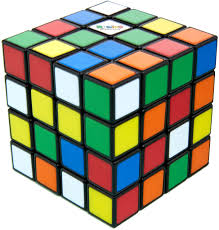
Multi-sensory mathematics teaching methods
The multi-sensor approach helps children learn.
Using vision, kinestics, hearing and movement can make it easier for children to understand what numbers and symbols represent.
Method 1 of 7. Visualization
Using balls, dried beans or even M&M dragee as an object of manipulation is a great way for children to imagine the essence of mathematical operations.
For example, children can solve a problem by adding more beads. Or they can find out how much is left after subtracting (physically disappearing) some. Children can also group different numbers of items to multiply and divide.
Method 2 of 7. Using Lego Details
Using Lego elements to create shapes allows children to get acquainted with the theme of part and whole.
It also gives them a concrete idea of the properties of the shapes they create. Tiles and cubes also work perfectly when teaching methods and operations.
For example, the teacher can stack items in groups of 2, 4, 6, and 8 of the same pattern and then ask the student to do the next three stacks in the template (by adding twice each time). The teacher then helps the student to connect the items to the numbers they represent.
Method 3 out of 7. Drawing
Drawing mathematics is the next step after working with practical materials such as beads or coloured lego dice. It’s a way of showing children how to think – and it takes them one step closer to writing numerical sentences with numbers and symbols.
For example, a teacher may ask students to solve a 4×6 multiplication (4 take 6 times) by typing 6 groups of 4 asterisks (apples, balls).

Method 4 out of 7. Adding music to math
There are many ways to connect math and music. For example, children can use songs to memorize algorithms or mathematical rules. And playing music notes can help children learn how to group or split.
For example, a teacher can play one note on the keyboard and hold it for a short time. It’s a “whole note.” Then students repeat it. Then the teacher may ask, “How many quarters of notes make up a whole note?”
After some discussion, the teacher or student can play four short notes that are the same length as the whole note.
Method 5 out of 7. Integration of motion into mathematics
Multi-sensory Learning: Techniques for Math learning is an attractive way to help students maintain what they have learned. There are many ways to do this. For example, children can show angles by turning their bodies while they are in a hoop.
There is an interesting game.
A teacher writes numbers on the outside of the ball (big ball). (It can be integers, fractional numbers, or decimal places). The ball passes through the room, and when the pupil catches it, he must perform a mathematical operation with two numbers on which his hands land.
Method 6 out of 7. Graphic Organizers
You can create a table of hundreds. A chart of hundreds can help children with mathematical problems see numerical relationships.
For example, a child can get a black and white grid of 100 squares (a large square divided into 100 units of a smaller square). It can be asked to paint 1/4 of its total volume.
When he or she has to find the number of square units to be colored (25). The child will determine for himself that ¼ is the same as 25 of 100, or 25 percent.
Method 7 out of 7. Use TRIZ in mathematics teaching
TRIZ is an acronym that stands for “the theory of solving inventive problems”. Like any other theory, it has its structure, functions and algorithm.
The theory of inventive problem solving is one of the most unique methods for development of creative abilities of a child, development of sense of mathematics in children.
As G.S. Altshuller, the founder of this method, said: “TRIZ is a controlled process of creating a new one, combining accurate calculation, logic, intuition”.